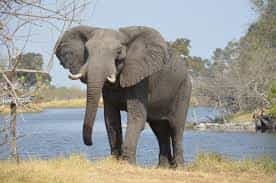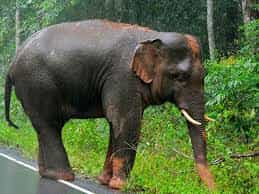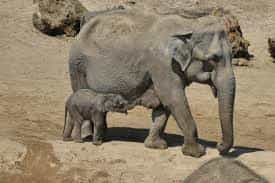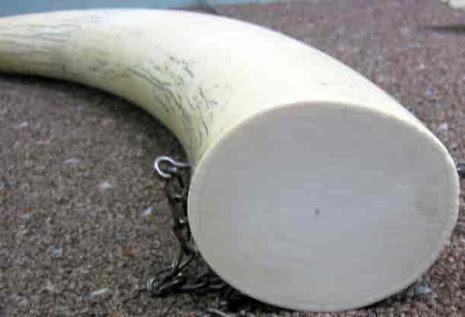Elephant Facts/ most unique, amazing facts
Elephant Facts
 |
| African elephant |
Elephants are the largest existing land animals and
belong to family Elephantidae. Experts currently recognize three species of
elephant, the African bush elephant, the African forest elephant and the Asian
elephant. African elephant is larger than Asian elephant with larger ears and concave
back but the Asian elephant has smaller ears and convex back.
Tusks
Elephant's tusks are actually the second incisor teeth
in the upper jaw. When the elephant is 6 to 7 months of age, their milk teeth
are replaced by the incisor teeth and grow continuously at about 17cm, a year.
The dentine is one of the four major components of the
teeth, also known as ivory. Most parts of the tusks are on the outside and the
remaining parts are in a socket in the skull. After removing the tusks, it is
necessary to keep them cool and moisture, otherwise the ivory dries up and
cracks.
The length of the tusks of the African elephant is
300cm and weight up to
Trunk
Elephant has a long trunk, which is also called
proboscis. Trunk is the confluence of the nose and the upper lip, although in
early embryonic life, the upper lip and trunk are separated. The trunk has no
bones but a little fat and up to 150,000 separate muscle nerve run along both
sides of the trunk. The Asian elephant has more muscles than the African
elephant and can perform more complex tasks. The Asian elephant has one
finger-like extension at the tip of the trunk but the African has two.
Elephants use their tusks for breathing, touching,
grasping and also producing the sounds. Their sense of smell is very powerful
and four times as sensitive as that of a bloodhound dog. Elephants can twist
and coil their trunk and able to do the delicate tusks like wiping an eye or
cracking a peanut shell without breaking the seeds. They suck up water and spray
on themselves with their trunk when bathing. An Asian elephant has ability to hold 8.5L of
water in its trunk.
When they traverse rivers and totally submerge, they use their trunk just like snorkel, and hold the tips of the trunk outside the water surface to breathe. An elephant has millions of receptor cells in the upper nasal cavity so they able to smell water from several miles away.
 |
| Asian Elephant |
Skin
The skin on the back and head of the elephant is 2.5cm
(1 inch) thick and very tough and can weigh as much as 2000 pounds, or over 900
kg, but the skin around the mouth, anus and inside the ears is comparatively
thin. Calves have hair on their head and back. Elephant skin is very tough but
very sensitive. After bathing, they blow dusk on themselves with their trunk to
protect their sensitive skin from burning, insect bites, moisture lose and from
ultraviolet rays of the sun.
Elephant skin is wrinkled and the African elephant is
more wrinkled than the Asian elephant, which help to help to retain moisture, keeping the
skin in good condition.
Elephants have very few sweat glands which are located
on the foot, near the cuticles, so on hot days, a wet area is seen around the
top of their toenails.
Elephants have two visible glands found on their skin,
mammary glands and the temporal glands. They have one temporal gland, located on
each side of the head between the eye and the ear. When
the animal gets very excited, these glands produce a secretion that trickles
down the side of the face.
The researchers found 15 “hot spots” on the surface of
the elephant’s body and on the ears, through which they reduce their body
temperature. They cool themselves by flapping their ears and bathing.
Legs
The elephant’s four limbs give support their weight
and positioned more vertically under the elephant’s body. 60% of the elephant’s
weight is borne by the front legs. Elephant can stand still for a long time
without tired. They cannot rotate their front legs. Their pillar-shaped legs
have circular feet with soft tissues or “cushion pads” under their feet which
distribute the elephant’s weight. They can move forward and backward but cannot
jump. When they move fast, which appear to run, use their front legs and the
speed can be reach up to 25km/hr. Elephant can swim up to 6 hours without
touching the bottom and travelled 48km at the speed of up to 2.1km/hr.
Other organs
The weight of a human brain is 1.3kg to 1.4kg but the
elephant’s brain is 4.5kg to 5.5kg. An adult human brain is about 2% of the
total body weight but at birth, an elephant’s brain already weighs 30%-40% of
its adult weight. The Cerebrum and Cerebellum of the elephant’s brain are well
developed.
Their skull has air cavities which make the inside of
the skull like a honey-comb. These cavities reduce the weight of the skull.
Elephant can store water in their throat for later use,
their larynx commonly known as voice box, is the largest among mammals. Their
lower jaw is heavy and strong.
The nictitating membrane is a transparent third eye
globe of the elephant. They have the
longest eyelashes in the world, At 5 inches, or 12.7 centimetres long.They can
see well in dim light but not in bright light.
The elephant’s body is made up of 326-351 bones. The length of the intestines of an elephant may be 19
meters or more than 60 feet long.
The weight of elephant’s heart is 12-21kg. At standing
position, the elephant’s heart beats 30 times per minute and when the elephant
is lying down, their heart beats 8-10 times per minute.
The average body temperature of both elephant and the
human is same (98.6°F).
Among all of the elephant species, African bush
elephants are largest.
Diet
Elephant is a herbivorous animal and can consume 150kg
of food and 40L of water in a single day. They mostly eat in the morning,
afternoon and at night but at midday they take rest. They sleep 3-4 hours per
day. They produce a lots of methane gas. In a single day, an elephant produces
a lot of methane gas by which a car could travel about 20 miles.
Baby
 |
After 22 months pregnancy, mother elephant gives birth
one or two calves. The height of the calf is 85cm and weight around 120kg. For
the first few days, mother does not allow any other herd members near her baby.
Every day the calf drinks around 3 gallons of milk. At the age of 12 years, the
male young leave the herd but the female stays with its family. After birth,
the calf stands quickly and walks with its mother but its eyesight is poor. All
herd members give full attention and protection to the calf. They gather around
the calf and hold it with their trunk.
At first baby
elephant doesn’t really know the use of its trunk. It swings its trunk to and
fro, steps on it or sucks its trunk just like a human baby sucks its thumb. This
time it drinks water directly through its mouth. When the calf is 6 to 8
months, it uses its trunk to eat and drink. At the age of 1 year, the calf can
control its trunk and uses its trunk for grasping, eating, drinking, bathing
etc.
To discipline the younger, the older elephant uses
trunk-slaps, kicks and shoves. When the herd moving, mother holds the calf’s
tail or touches the feet with its trunk.
When the calf feel tired and wants to take rest, it
presses against its mother’s front legs and when it is hungry and wants to
suckle, it touches its mother’s breasts or legs.
Intelligence
Elephant is a
very smart animal. According to the researchers at the University of Sussex in
Brighton, UK, African elephant can distinguish differences in human gender,
age, ethnicity by the voice.
To prove this, they bring two men from different
ethnic groups, one is Maasai and the other is Kamba. Maasai, who have a history
of killing elephant and the Kamba do not. Then the researchers recorded the
sentences by Maasai and Kamba “Look, look over there, a group of elephant is
coming” in different their different languages. Then the researchers went to
the Amboseli National Park in Kenya and played the recordings to the elephant
herd. When the elephant heard the voice of
Massai, they showed the sign of fear and ran away but to heard the same
recording phrase of Kamba, the elephant did not show any reactions. This way
they prove that the elephant can discriminate between different languages.
They not only understand the differences of languages
but also distinguish between gender and age. They can understand the body
language of human.
A recent study showed that Asian elephant comfort each
other by using vocal sounds, stroking each other with their trunk and emitting
small chirps.
In 2012, the
researchers realized that an Asian elephant whose name was Koshik could say
five Korean words yet he did not know the meaning of those words. the
researchers believed that Koshik was only mimicking sounds as a way to bond
with humans.
Elephant has extraordinary memories. They form close
bonds with companions and can recognize them after long time of separation.
In 1999, two elephants Shirley and Jenny worked in a
circus but after 20 years separation they met each other at The Elephant
Sanctuary in Tennessee, they recognized each other and showed their love .
Poaching

Poachers hunt elephants for ivory. Ivory is used to
make piano keys, billiard balls, combs, ivory box for ornaments etc. In
January, 2012, Chadian invaders killed 5,050 elephants in Cameroon’s Boda Enjida
National Park. It has been called “one of the worst concentrated killings”
since the ivory ban. In September, 2015 China and United States said that they
would complete ban on the ivory because of elephant extinction.
Now 440,000 elephants are estimated in the world. Elephant live around 60 to 70 years. Lin Wang was a captive male Asian elephant, who lived for 86 years .


.jpg)














0 Comentarios:
Post a Comment
Please do not use any abusing words or enter any spam links in the comment box